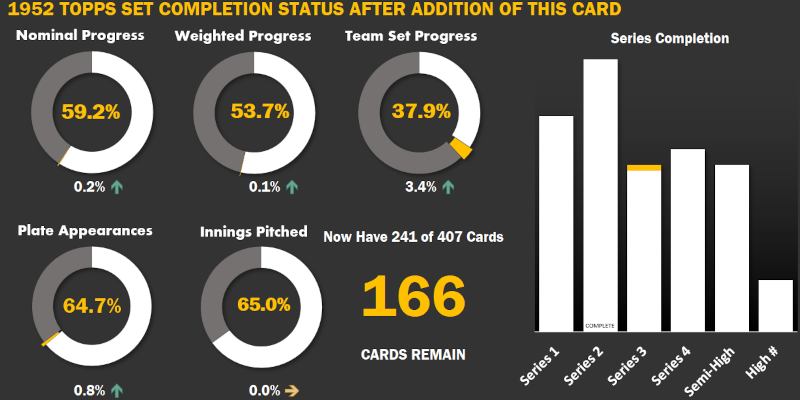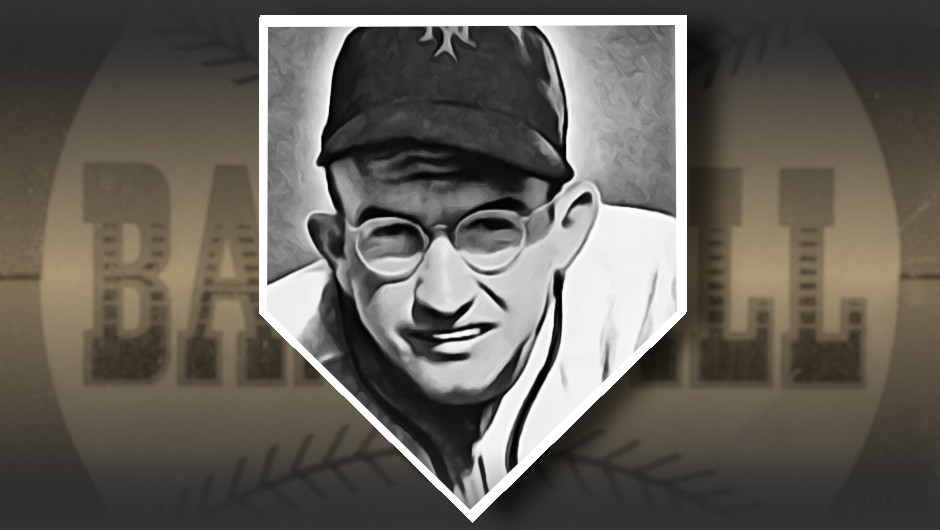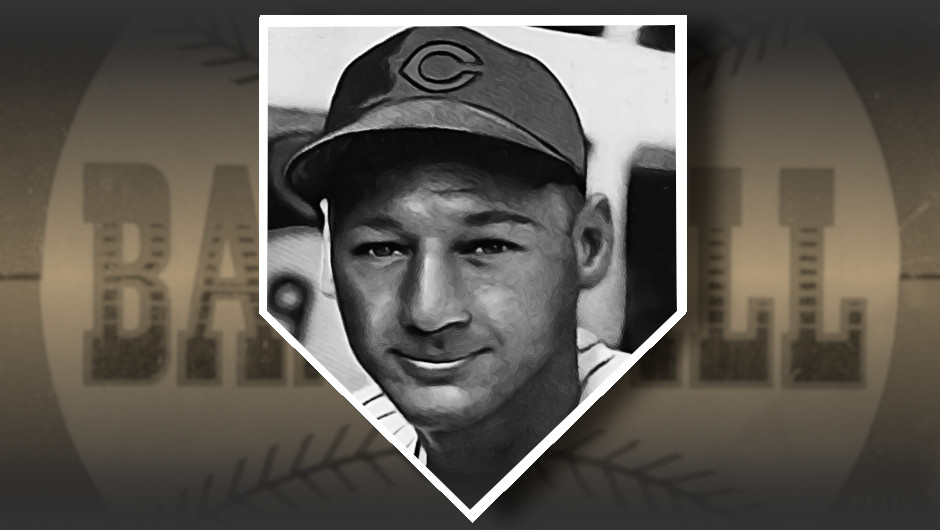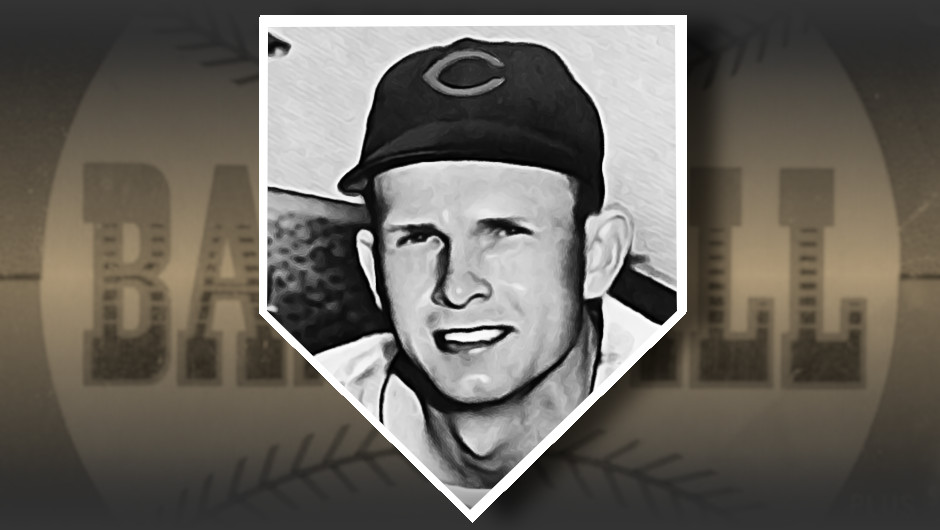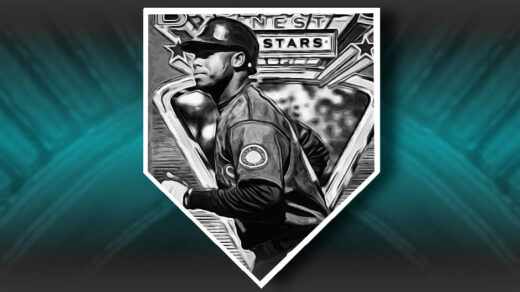Pretty much anyone who has ever picked up a price guide knows the 1952 Topps set has some pretty good rookies in it. Minnie Minoso. Hoyt Wilhelm. Charlie Maxwell. Joe Black and Joe Garagiola. Dick Groat. Joe Nuxhall. Billy Loes. Future managers Dick Williams and Billy Martin. There are more than 100 additional rookies in the set, let alone Eddie Mathews, who according to price guides still has the most in demand Topps rookie base card across the last seven decades.
What if I told you a name is missing from this list? What if that name was considered by many to be one of the best defensive gloves to ever play a premium position on the diamond? What if his defensive prowess was so pronounced that fans routinely called him “Mr. Shortstop?” What if this miracle shortstop also put together one of the longest consecutive games streaks in the history of the game?
Roy McMillan finds his cardboard debut as card #137 in the ’52 Topps checklist, appearing just 4% of the way through his 2,093 game career. That season was the first in which he earned regular playing time, replacing Red Stallcup as Cincinnati’s primary shortstop.
So just how good was McMillan in the Reds middle infield? 70-some years later he still ranks inside the sport’s top 10 for double plays. He is in the top 20 for assists and putouts at short, and ranks 10th in total zone runs, a figure that would improve even further if his TZR was reported earlier than 1953. Some time ago SABR set out to identify the game’s best defenders. Their verdict? McMillan was the best NL shortstop of the 1950s.
He didn’t just tail off, either. In his mid-30s he almost single handedly turned a triple play in a 23-inning marathon against the Giants. McMillan almost cracked the top 10 for consecutive games played with a streak of 584 contests. Matt Olson is the only current MLB player to surpass 500 games.
In short, any ball hit towards McMillan was likely to generate one (or more) outs. The defensive contribution to his WAR totals becomes visibly pronounced when his graphed against the contribution of his batting totals. Look at the scatter plot below and note just how far his red dot is from the rest of the pack.
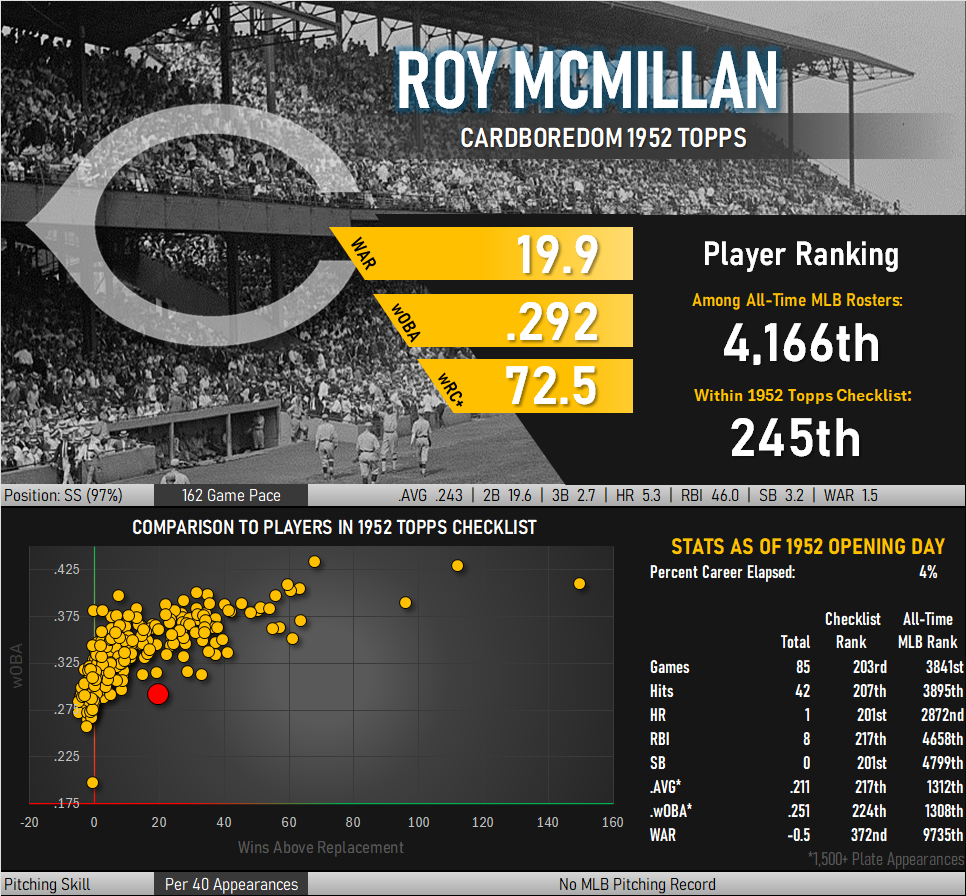
I have to admit that the defensive whiz known as “Radar” wasn’t on my screen I first started looking at the ’52 Topps set. I also have to admit the fact that I initially thought his rookie card portrayed him sitting in an oversize wicker patio chair. That visual effect turns out to be a trick of the coloring process in which a monochrome wash was applied to the third base grandstands while the rest of the image is given a more colorful treatment. Oops.
The good news is that this card is in better shape than the majority of my examples from the set. The corners have some odd wear patterns, as if only the top layer of cardboard is getting damaged while the accuracy of the guy cutting the card from press sheets leaves something to be desired.
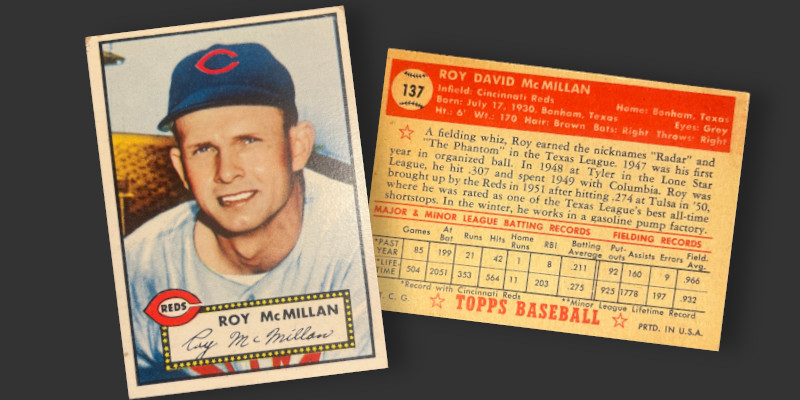
This card takes my overall set completion to nearly 60% while the status of my Cincinnati team set sits at just 38%. It looks like I will need to pay more attention to this team, a conclusion that appears obvious in consideration of how unfamiliar I was with one of the franchise’s best defensive players.
